I know I came across a 2 op-amp, 2 capacitor circuit that can be used for a single section of an Inverse Chebyshev (a.k.a. "Chebyshev Type II) or an Elliptic (Cauer) filter. It has a pair of zeros on the \$j\omega\$-axis at \$\pm j\omega_z\$, and with resonant frequency \$\omega_0<\omega_z\$ and the transfer function is:
$$ H(s) = \frac{1 + \left(\tfrac{s}{\omega_z}\right)^2 }{1+\tfrac{1}{Q}\tfrac{s}{\omega_0}+\left(\tfrac{s}{\omega_0}\right)^2} $$
I know how to brute force derive a circuit with a pair of integrators and the canonical form we learned in Linear Circuits class 4 decades ago. Such as this:
I just thought I saw a more elegant circuit, with one less op-amp and a couple fewer resistors, that pretty much guaranteed that the zeros lie on the \$j\omega\$-axis and at a higher frequency than the resonant frequency \$\omega_0\$. Anybody know how to save a couple of parts with this? Is there a single op-amp, two-capacitor, 4-resistor circuit that can do this?
A sorta Sallen-Key with zeros.

